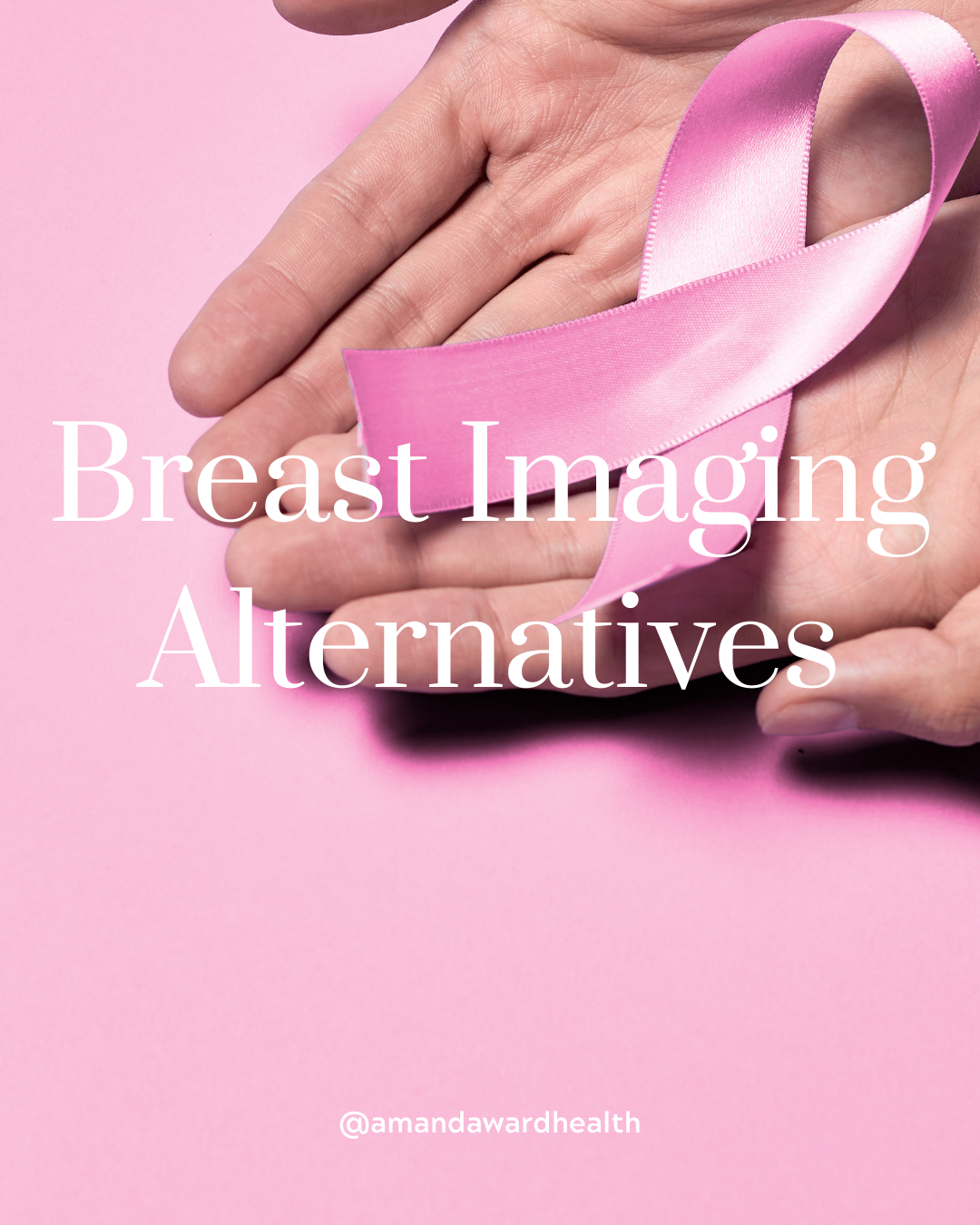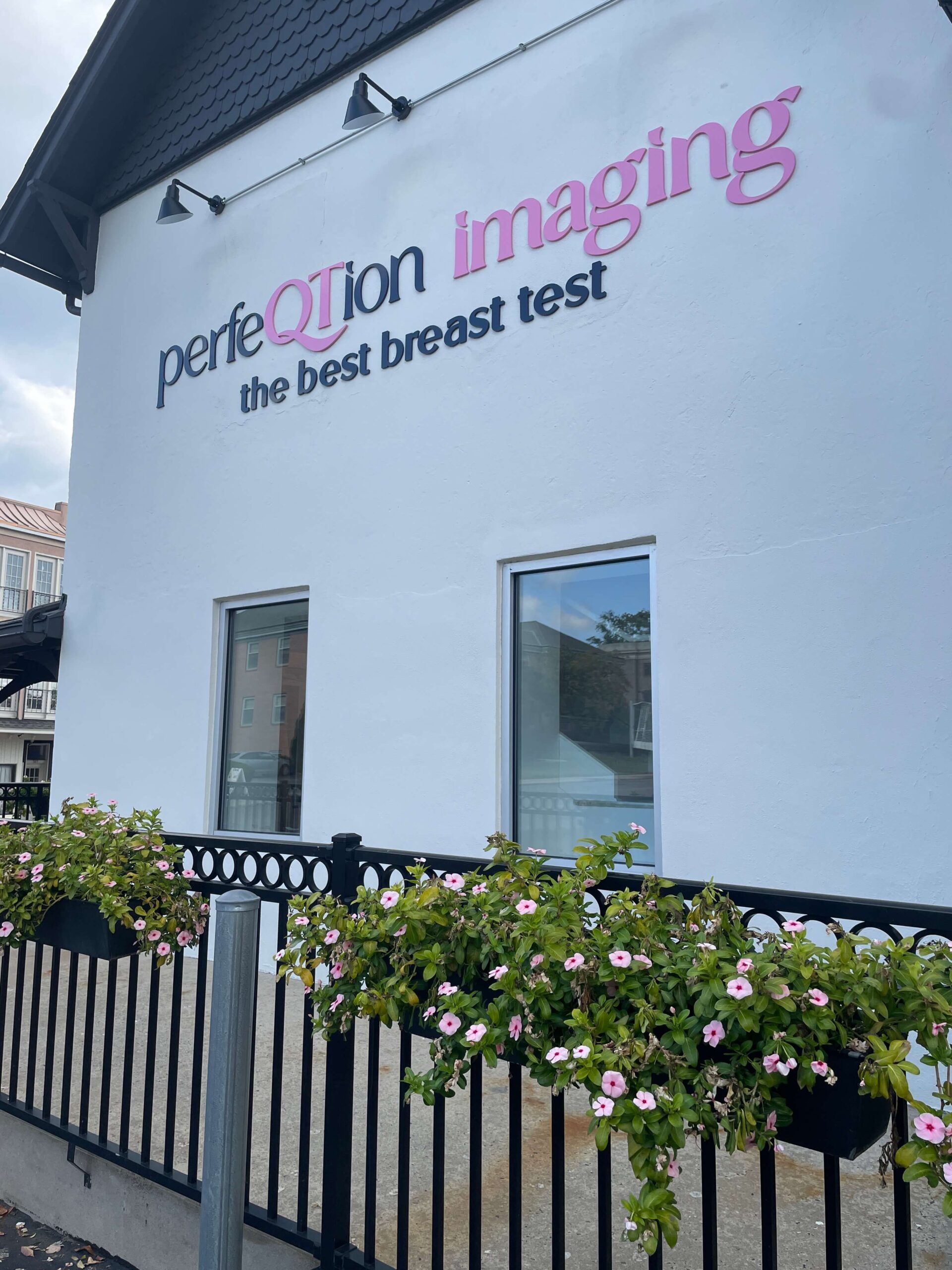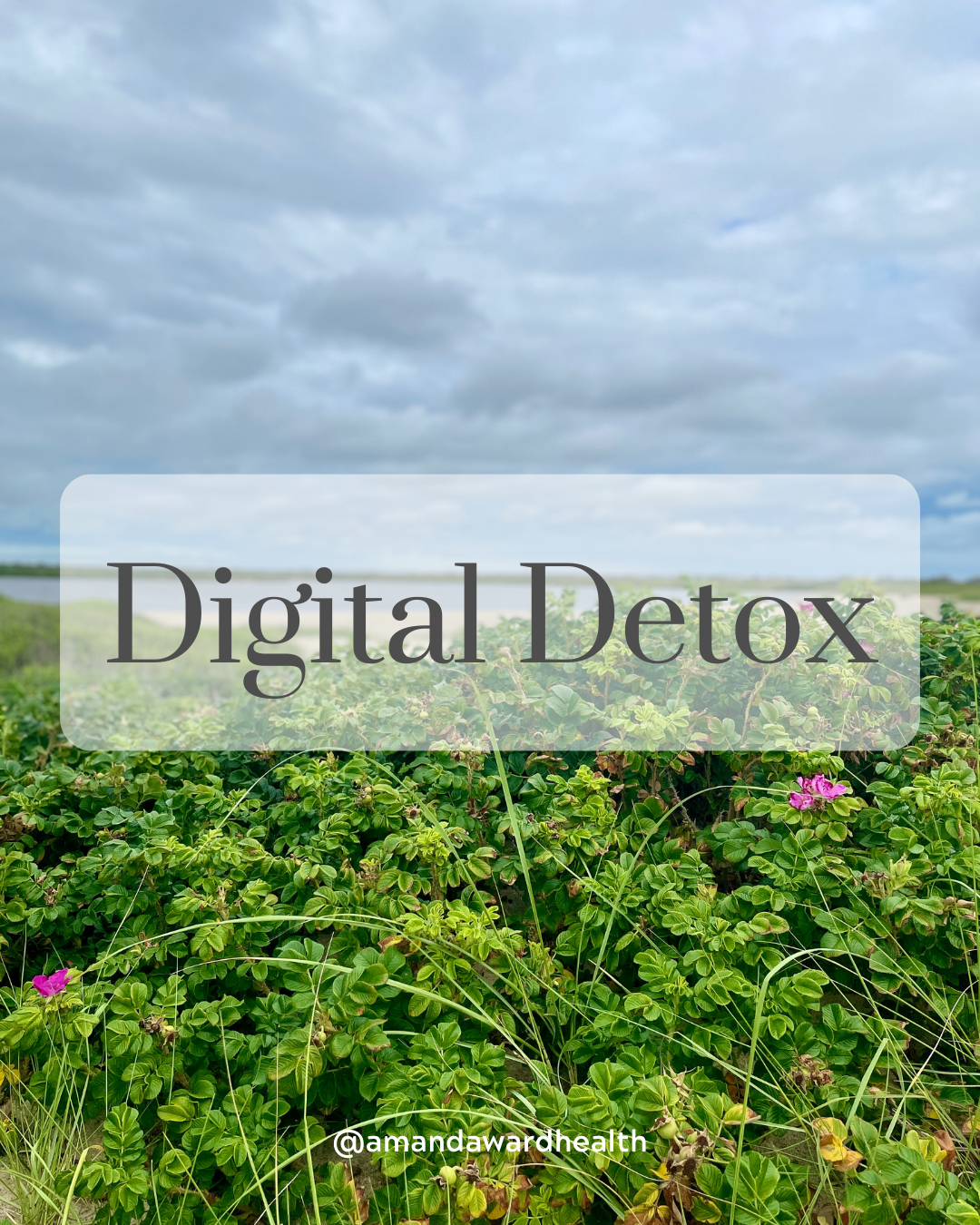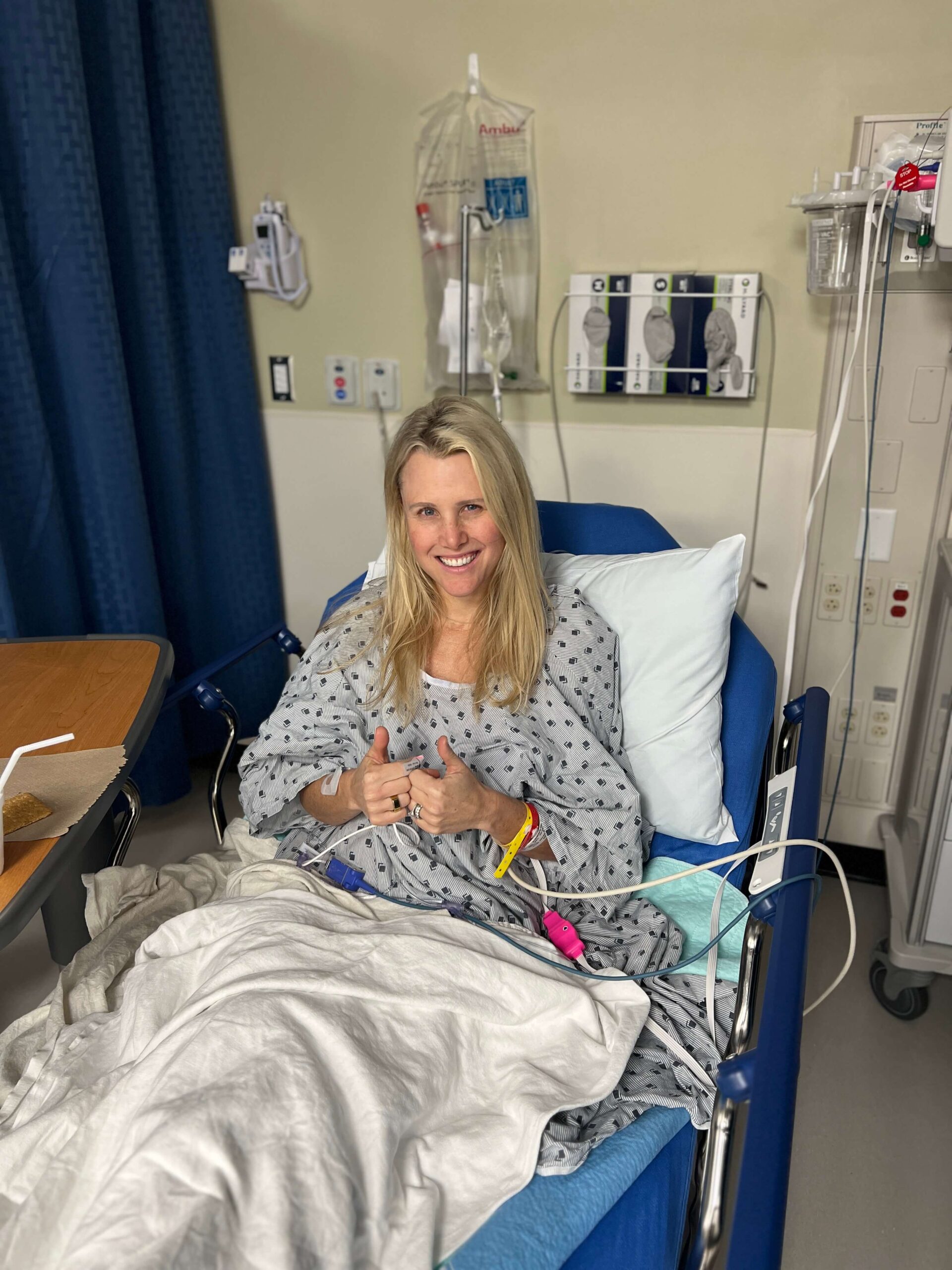“You gain strength, courage, and confidence by every experience in which you really stop to look fear in the face”
~Eleanor Roosevelt
Disclaimer: This information is not medical advice. Part of what I am sharing falls outside of radiology and surgical oncology guidelines, recommendations, and “standard of care.” *Please consult your own health provider (hopefully one who is integrative, functional or naturopathic) and continue your own research.
I am writing this from a place of perspective, insight, and humility. Let me first say that I recognize almost everyone reading this post has, or will have, someone in their life who has been affected by breast cancer. It is a devastating disease, I have seen my mother, aunt, both grandmothers, mother-in-law, and countless friends and colleagues face this disease. It is not an issue I take lightly.
Last year for October’s Breast Cancer Awareness month, I wrote about non-toxic deodorants and breast cancer prevention tips. This year is more personal.
The past few weeks I have been on a complex breast journey that is not over. I have always been a strong advocate for breast health, and thought I was on the correct recommendation path, until recently. As with most things, I have evolved. My perception of healthcare, and my professional opinions have shifted from one of blind acceptance, towards a questioning/discerning mindset.
As both a healthcare provider, and a researcher I question – everything. In the U.S. we need to recognize that while our healthcare system is in many ways cutting-edge, it also, is heavily influenced by competing interests – governing bodies, the insurance industry, reimbursement quotas, etc. As such, when it comes to my own health, or the health of my family, I approach life with a discerning eye. I question the status quo (including my own healthcare knowledge) and try to look at things with fresh, educated and inquisitive eyes.
The three questions I use:
- Is this necessary?
- Are there alternatives?
- What are our European, or international. counterparts doing?
This concept provided the framework for my PhD disseration, and it is my default for pretty much anything. Need a baby formula? Follow the questions above. Curious about dietary supplementation? Follow the questions above. Need a repeat mammogram? Follow the questions above.
Mammogram Facts and Myths
In the United States, screening mammograms are considered the “gold standard” for breast cancer detection. However, this is not the case worldwide as countries have varying recommended starting ages, screening vs. diagnostic mammograms, as well as scheduling frequency (ranging from 1-5 years). I have always found mammogram screening complicated as the schedule has changed quite a bit over my career.
A point to note is that while mammograms can save lives, they also contain radiation. There is no way to avoid radiation exposure during a mammogram. Period.
Every image contains radiation and while we all know radiation can cause cancer I am not making the direct correlation here. I encourage you to come to your own conclusion, but this year, viewing breast cancer, and mammograms, and all other modalities with “fresh eyes” I became all the more acutely aware of how many mammograms are ordered, and repeated, and repeated again. My mind and heart see the word radiation, radiation, and more radiation. Conventional medicine says to not worry about this radiation exposure, however my own research on this topic has told me otherwise.
Radiation Exposure
To put in perspective an x-ray= 0.1mSv (millisierverent which is a radiation measurement showing the amount of radiation absorbed by the body).
An average low-risk, 2D mammogram = 0.4mSv (that is the equilivent of 4 x=rays)
A 3D mammogram = even more radiation.
A low dose 3D image is ~1.45mSv (equivalent of 14.5 x-rays) and that is just from one mammogram. If you have dense breast tissue (which over 50% of women do) then the radiation doses are dialed up even higher (not reported to you – just dialed up) for better imaging.
Consider the situation if you are in a group that has your screening, then the images are retaken (which will happen if they see something, or do not get your breast perfectly positioned in the scanner), then you are recommended for another, diagnostic mammogram … you can see where I am going here . You could potentially be up to the equivalent of >40 x-rays for just one diagnostic test.
Most radiologist will tell you the radiation exposure from a mammogram = 40 days of background radation (what you might naturally obtain being in the sun). In my case, the initial mammogram ended up being two images (due to a few factors) = 80 days exposure. Personally, I eschew the sun – I wear SPF everyday (rain or shine), hats when I am walking outside, always in the shade. To me 40, 80, or even more sun/background exposure is something I do not take lightly.
Mammogram Discomfort
Also, mammograms are are painful. If you have dense breasts then your radiation risk increases (as the imaging is dialed up for accurate imaging) and they become even more painful. It is up to the technician as to how much pressure they apply. My last mammogram I looked at the pressure being applied to my breast and it was 22.5 lbs … yes, pounds of pressure, squeezing. Tears formed.
I have many friends with breast implants, a few of whom have had “ruptures” very close to when they had their mammograms. Manufacturers and physicians will say that mammograms do not cause ruptures. Anecdotally, however, I wonder if they can cause ruptures.
Mammogram Alternatives
It is important to be informed of alternatives and your options.
Ultrasound. An ultrasound is a safe, pain-free breast image that can identify up to 85% of breast cancers. It I a wonderful adjunct and is often recommended if you have an abnormal mammogram.
Thermography. I do not have experience with this modality as it is not FDA approved, nor cleared. Pursue at your own risk.
SoftVue™ 3D Whole Breast Ultrasound Tomography is FDA approved as an adjunct to a mammogram, meaning you need to have a mammogram as well, which negates the benefits of the SoftVue.
MRI. MRI has a specificity of >90% for diagnosing breast cancer. It is effective for those with dense breast tissue and implants. However, it is not without risk. Gadolinium is the contrast used for MRI imaging. This heavy metal carries a FDA warning and can stay in your body for years.
QT Imaging. A new, FDA-cleared technology, QT imaging has entered the market. QT is radiation-free, safe and 40x the resolution of a MRI. Unfortunately, there are not many centers in the US, however if you are interested in learning more, click here.
Helpful Resources
I recognize this article may generate more questions than answers, and for that I recommend you read Dr.  Jenn Simmon’s book, The Smart Women’s Guide to Breast Cancer. We both trained at the Institute for Integrative Nutrition (wonderful course) and her evidence-based, real-world approach to breast cancer, prevention, diagnosis, and treatment provided me with hope. Hope that there are advocates out there willing to ask tough questions, to look at the sequela associated with current treatment options, and to challenge the status quo.
Jenn Simmon’s book, The Smart Women’s Guide to Breast Cancer. We both trained at the Institute for Integrative Nutrition (wonderful course) and her evidence-based, real-world approach to breast cancer, prevention, diagnosis, and treatment provided me with hope. Hope that there are advocates out there willing to ask tough questions, to look at the sequela associated with current treatment options, and to challenge the status quo.
If you choose to pursue a screening mammogram, or MRI then she has recommendations and protocols in her book that provide health-focused tips you can implement to minimize any risk.
Meaningful podcasts that helped me: Chris Werk and Jenn Simmons.
I am humbled by this disease process, and empathize on a very deep, personal level the fear, confusion and paralysis that comes with a call-back mammogram, with the unknown. Dr. Simmons, along with time spent in the Bible, has provided me with a peace. A peace to accept my results (no matter what they may be) with grace and strength. To feel empowered to face the dark, to question the establishment, and to be an advocate for others.
Ways to Minimize Breast Cancer Risk
For me personally, I went against conventional medical advice and opted out of multiple repeat mammograms. From my own research perspective the benefits did not outweigh the risks and instead I pursued an ultrasound and QT imaging. For more details on my QT experience read here.
In the meantime, as I am still waiting for my final results I am circling back to what I have learned, and what I know medically are ways to minimize my own breast cancer risk. Many of these practices are already part of my day-to-day routine, and I am going to continue this path:
- Daily exercise
- Minimizing alcohol consumption
- Stress management
- Intentional Fasting
- Eating real, non-processed food
- Making my home a safe-haven
- Digital detox (being mindful of what media I consume)
- Cultivating hygge
- Being conscious of what I bring into my personal space (friendships, music, etc.)
- Non-toxic cleaning
- Deepening my relationship with God
If you have read this far, you are not alone. You are valued, you are loved, and you are seen. Consider this the tipping point of research. A snippet of information to cultivate an inquisitive mindset and your own journey of exploration.
To ask questions …
and more questions …
and to not settle until you feel heard, at peace, and comfortable with the response.
I am here for you!
As an Amazon Associate I earn from qualifying purchases. I only share products that I personally own, use and love.





